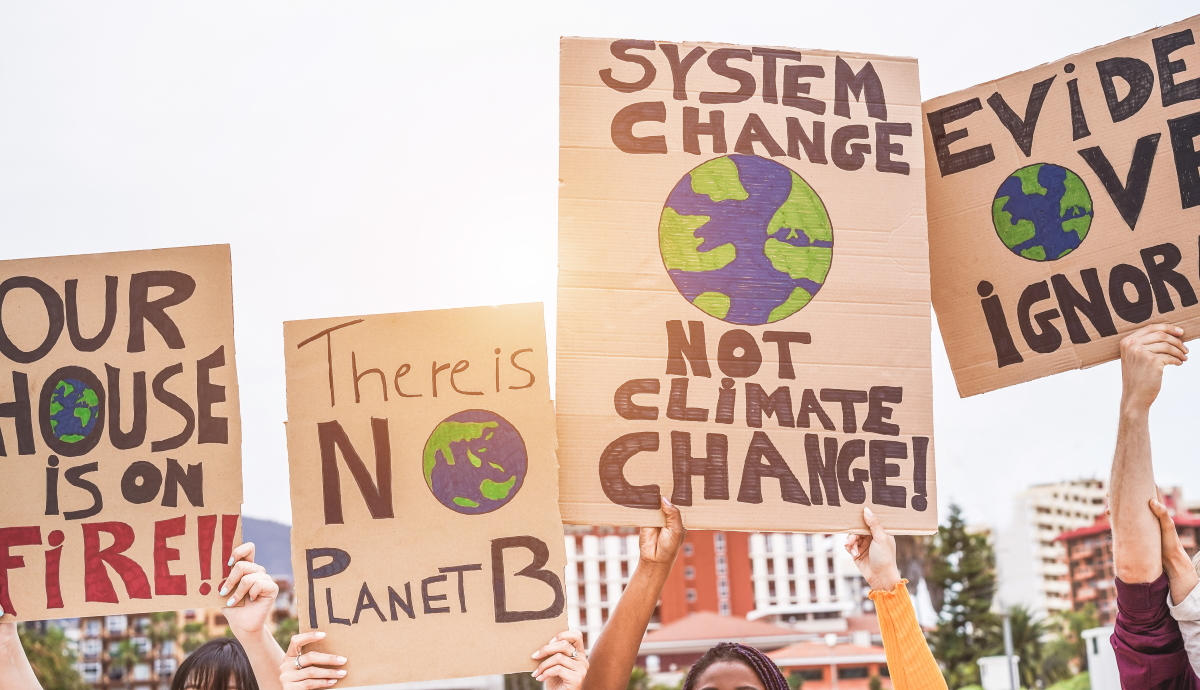At a critical time in the battle against climate change, all eyes are turned towards the 2021 United Nations Climate Change Conference or COP26 summit (26th “Conference of the Parties”) that takes place from October 31 to November 12 in Glasgow, Scotland.
After a one-year postponement due to the Covid-19 pandemic, the world leaders and national negotiators are meeting at this summit to bind the targets set in the 2015 Paris Agreement, discuss the scope of reducing greenhouse gas emissions and commitments to cutting coal use.
The U.N. Intergovernmental Panel on Climate Change’s latest report, released in August 2021, finds that limiting warming to close to 1.5°C or even 2°C will be beyond reach unless there are immediate, rapid and large-scale reductions in greenhouse gas emissions. According to a new IMF Staff Climate Note, cuts of 55% below baseline levels in 2030 would be urgently needed to meet the 1.5°C goals, and 30% to meet the 2°C objectives.
Coal has been the highest contribution to carbon dioxide (CO2) emissions and rising coal demand is one of the major contributors to the rapid rise of emissions in 2021. Coal accounts for 34% of the world’s power production in 2020, according to the BP Statistical Review of World Energy.
Coal use has become one of the major issues creating a deep divide between advanced and developing nations. The pressure of downsizing coal consumption is significant on energy-hungry economies from Asia. However, this could have a major trickle-down effect on Asia’s industrial sector that accounting for about 40% of the region’s emissions.
Asia hooked on Coal
Coal grip remains strong in Asia, which accounts for almost 60% of the world’s population and about half of the global manufacturing. As one of the fastest-growing regions in the world, power demand is rapidly increasing throughout Asia. The region accounts for over 50% of global greenhouse emissions, as it is home to some of the world’s largest carbon emitters like China, India, Japan, Indonesia, Vietnam and South Korea.
China, despite its 2060 carbon neutrality goal, is the world’s largest coal miner, consumer and emitter. Coal emissions account for nearly 70% of the country’s carbon emissions. China has over 1,000 coal plants currently in operation, while another 240 are under construction. The world’s second-largest economy has urged coal miners to raise output, as it suffers a major energy crunch. Data from the National Statistics Bureau showed that China’s power consumption rose 13.8% year on year to 5.47 trillion kWh. It is also the largest public financier of overseas coal plants in the world, commissioning 76% of the world’s new coal plants in 2020, up from 64% in 2019, as per a Boom and Bust 2021 report.
India is also one of the heaviest users of coal in Asia and the world’s third-largest CO2 emitter after China and the US. Both China and India currently depend on coal for 60% to 70% of their power generation, according to the International Energy Agency. As per Global Energy Monitor (GEM) data, 281 coal plants are operating in India, while 28 are being built and another 23 are in pre-construction phases.
Meanwhile, the Philippines, Bangladesh, Pakistan, Indonesia and Vietnam also have a high dependency on coal-fired plants for their power generation infrastructure. Japan, the world’s fifth-biggest CO2 emitter, is home to 150 coal-fired power plants and is also building seven large new coal-fired power stations. In 2019, coal generated 32% of all power in Japan. The country’s dependency on coal and gas as fuels for power has grown as compared to the nuclear power industry, in crisis since the Fukushima disaster.
Furthermore, many new coal-fired power plants are coming up in Asia. Projects under construction in South Asia and South-East Asia will raise coal-burning capacity by 17% and 26%, respectively. According to data from GEM, nearly 200 coal-fired power stations are under construction in Asia, including almost half (95) from China. It added that the CO2 emissions from the new plants alone will be close to 28 billion tonnes over their 30-year lifespans.
Can Asian countries achieve their emission goals?
As large cuts will be needed to meet climate goals, this could turn out to be a narrow window of opportunity for countries from Asia, especially China, Japan and India, the biggest emitters of all.
With China increasingly coming under pressure, the world’s largest emitter is working on changing its energy footprint. However, in its latest Nationally Determined Contributions (NDC), China kept its emission goal unchanged, stating that it aims to peak carbon dioxide emissions before 2030 and achieve carbon neutrality before 2060. The country will lower its carbon intensity by over 65% by 2030 from the 2005 level, and increase the share of non-fossil fuels in primary energy consumption to around 25% by 2030.
In a surprise, Japan has also kept its goal unchanged to achieve carbon neutrality by 2050. The country’s new goal is to reduce greenhouse gas emissions by 46% by 2030. To extend the lifespan of its coal-fired power plants, Japan is also planning to add low-carbon ammonia to its fuel mix, targeting both stable energy supply and lower carbon dioxide emissions.
India, in the meanwhile, has committed to a net-zero target by 2070 and upped the renewable energy goal of the country to 500 GW by 2030. At the U.N. climate talks, India and the UK also plan to launch the new Global Green Grids Initiative One Sun One World One Grid (GGI-OSOWOG), which aims to create a solar grid connecting countries to different parts of the world. Both the nations have also agreed on a Smart Power, Renewable Energy and Storage programme.










 Australia
Australia China
China India
India Indonesia
Indonesia Japan
Japan Malaysia
Malaysia Philippines
Philippines Singapore
Singapore South Korea
South Korea Taiwan
Taiwan Thailand
Thailand Vietnam
Vietnam Germany
Germany Hong Kong
Hong Kong USA
USA Switzerland
Switzerland Singapore
Singapore
 United Kingdom
United Kingdom







